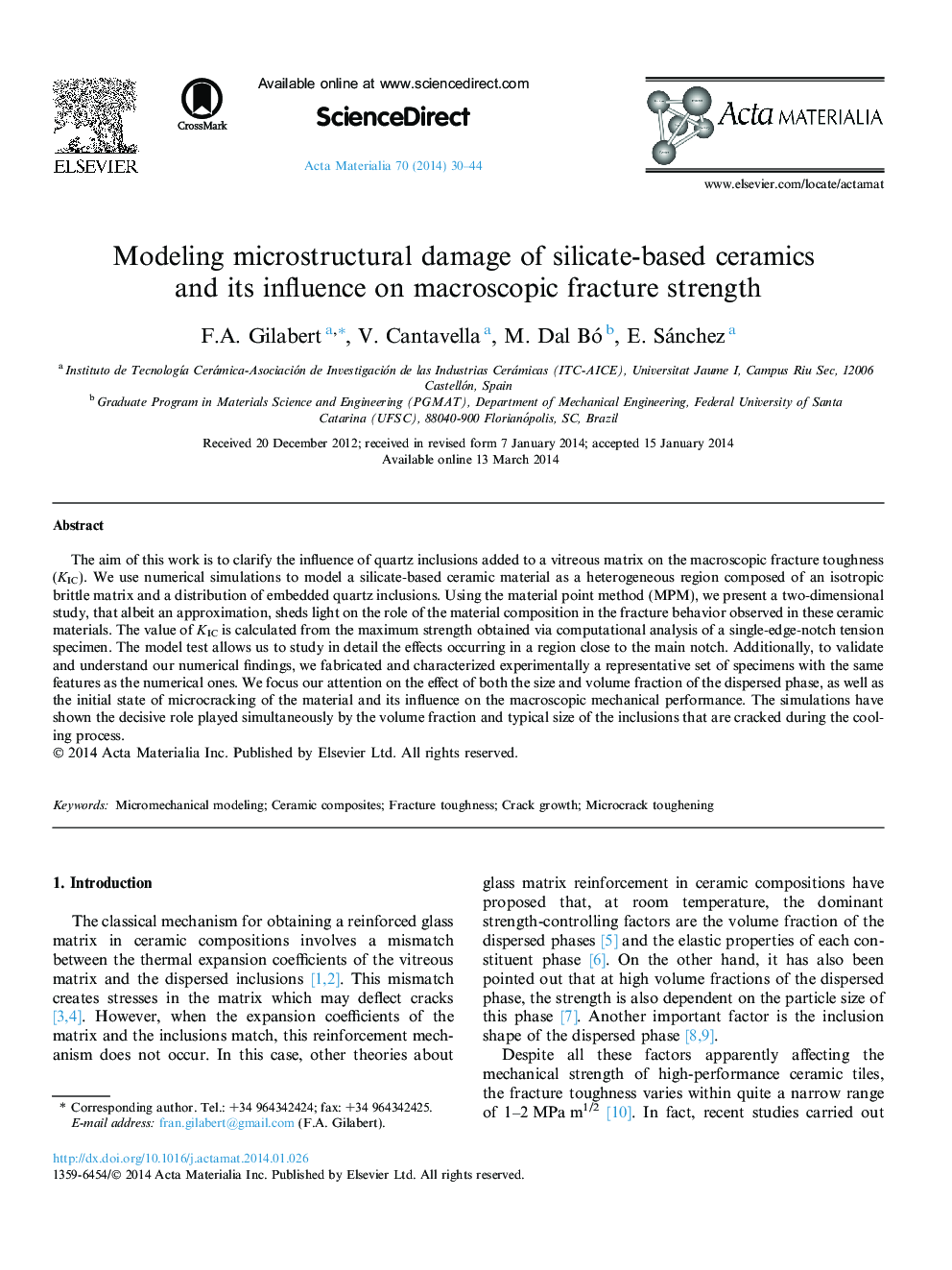| Article ID | Journal | Published Year | Pages | File Type |
|---|---|---|---|---|
| 7881982 | Acta Materialia | 2014 | 15 Pages |
Abstract
The aim of this work is to clarify the influence of quartz inclusions added to a vitreous matrix on the macroscopic fracture toughness (KIC). We use numerical simulations to model a silicate-based ceramic material as a heterogeneous region composed of an isotropic brittle matrix and a distribution of embedded quartz inclusions. Using the material point method (MPM), we present a two-dimensional study, that albeit an approximation, sheds light on the role of the material composition in the fracture behavior observed in these ceramic materials. The value of KIC is calculated from the maximum strength obtained via computational analysis of a single-edge-notch tension specimen. The model test allows us to study in detail the effects occurring in a region close to the main notch. Additionally, to validate and understand our numerical findings, we fabricated and characterized experimentally a representative set of specimens with the same features as the numerical ones. We focus our attention on the effect of both the size and volume fraction of the dispersed phase, as well as the initial state of microcracking of the material and its influence on the macroscopic mechanical performance. The simulations have shown the decisive role played simultaneously by the volume fraction and typical size of the inclusions that are cracked during the cooling process.
Keywords
Related Topics
Physical Sciences and Engineering
Materials Science
Ceramics and Composites
Authors
F.A. Gilabert, V. Cantavella, M. Dal Bó, E. Sánchez,
